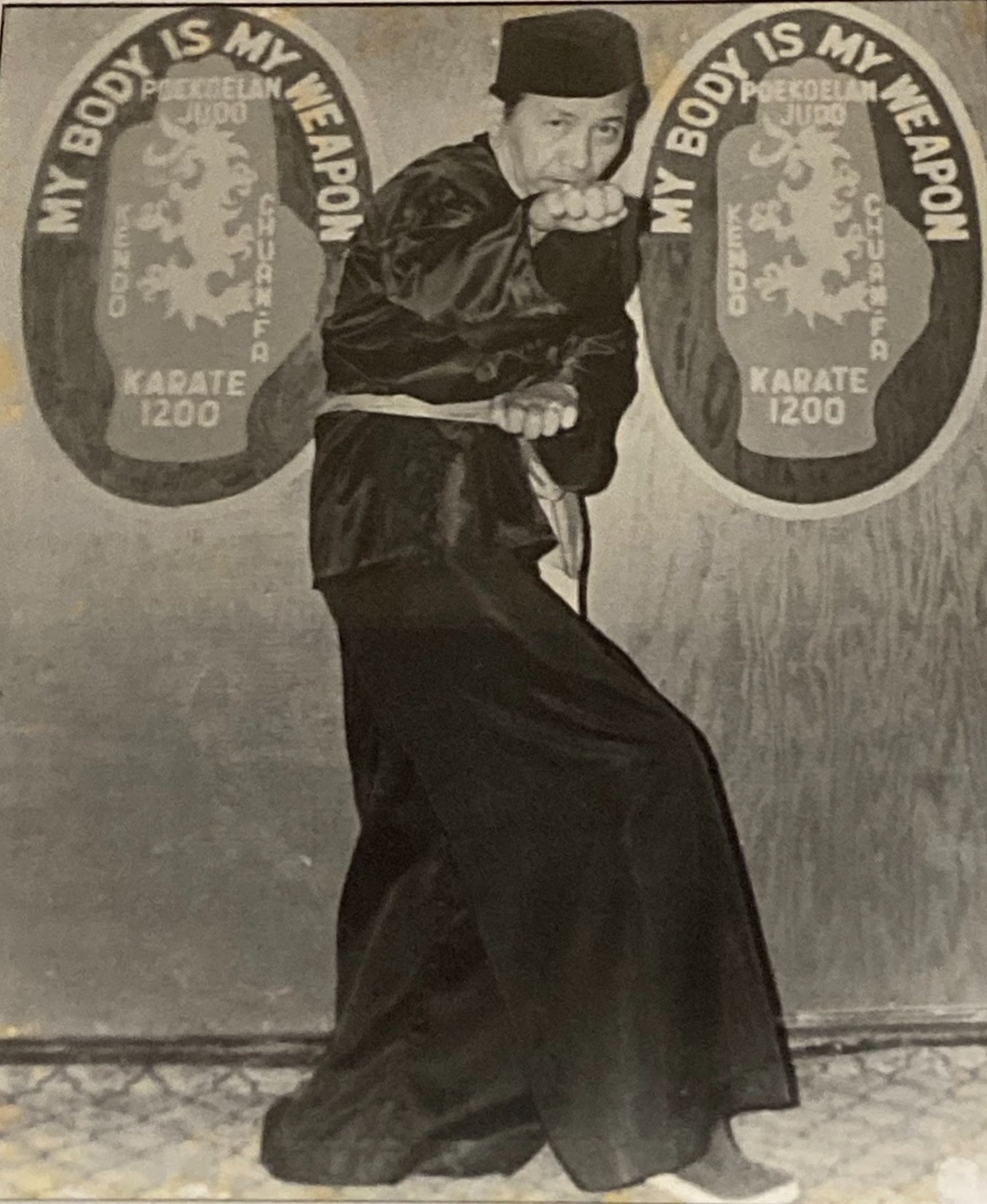What is Pukulan?
Pukulan is a style of the Indonesian martial art known as Silat. The name Pukulan comes from the Indonesian word to strike and means “a series of blows with returning hands and feet.” Pukulan practitioners throw rapid, whip-style strikes out of flowing movement derived from four animal styles: monkey, tiger, crane, and snake. These traditional styles were born from a time when practitioners found strength in a connection with the natural world by embracing animal movements.
Master Willy Wetzel
Origins
Indonesian Silat originated before written history, influenced by the many cultures traveling and trading in that part of the world. In old imperial times, the Javanese court formalized and refined martial arts to a high degree. Silat is traditionally practiced with musical accompaniment and in Dutch Colonial times the combat aspects were concealed as a form of dance. Pukulan students still use music and drumming rhythms characteristic of the art to enhance their training.
The art of Silat has survived Dutch colonization, occupation by the Japanese, a brutal fight for independence, and the resulting civil war. This history honed the combative elements of Silat to a great degree. When master teachers left the country after independence, they brought Silat to the West for the first time. One such Master, Willy Wetzel, brought his Pukulan system to the US in 1956. As a complete system, Pukulan incorporates several styles of Silat, as well as the self-defense fighting art of Kuntao.
What to Expect
Students in the intro course focus on strength and conditioning, followed by stance work and striking to pads. These are the foundations of self-defense. Kuntao self-defense training refines and builds on this foundation. Students practice these moves in different scenarios to be able to recognize and act in a self-defense situation.
Intermediate students move into the Pukulan system of Silat. In this phase, students train advanced techniques, forms, and more to develop a wider range of moves and a deeper understanding of their application. They also learn advanced animal styles of the monkey, tiger, crane, and snake; each with its own characteristic movements and attitude. In more advanced training, the practitioners integrate these physical and mental techniques in free-flow fighting.
The Four Animals
Tiger (Matjanan)
The TIGER style is a highly sophisticated method of fighting from the ground. It has powerful, explosive movement. The tiger style is strength, power and focus. The tiger’s principle of devour teaches us to wait patiently for the right moment to strike.
Monkey (Monjet)
The MONKEY is playful, yet fierce. Evasive footwork and unpredictable movement from medium-height stances are just part of this unique style. The monkey’s principle of disorient teaches us to be adaptable and promote flexibility.
Snake (Oeler)
The SNAKE style is mesmerizing. The spiral movement of the snake generates power through lightning fast whip-style striking from any position. The snake’s principle of flow out teaches us to yield, release, and reshape.
Crane (Blekok)
The CRANE style gives us arial movements and pinpoint targeting. When provoked, the crane’s nature is relentless and overwhelms the attacker. The crane’s principle of flow teaches us to connect, move forward, and not be concerned with outcomes.










